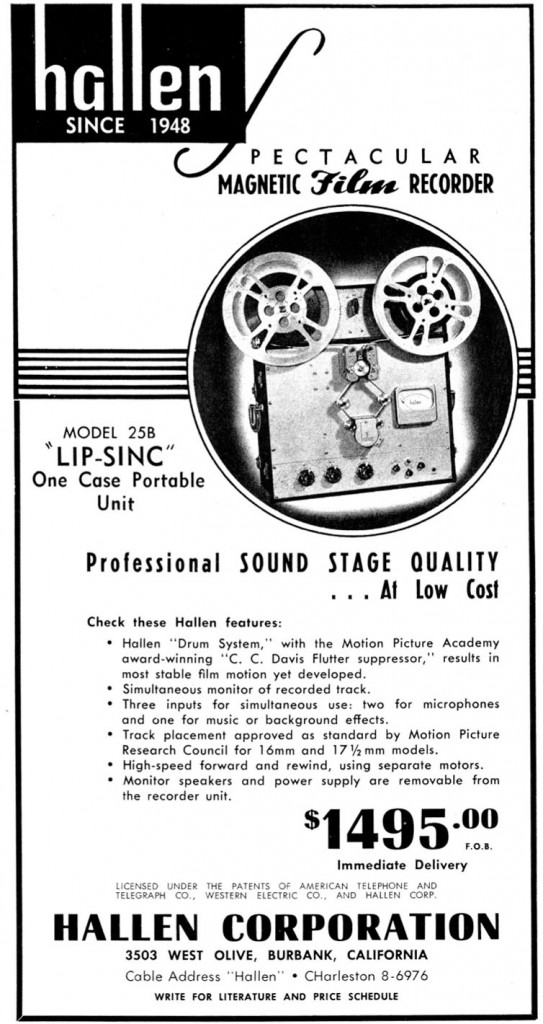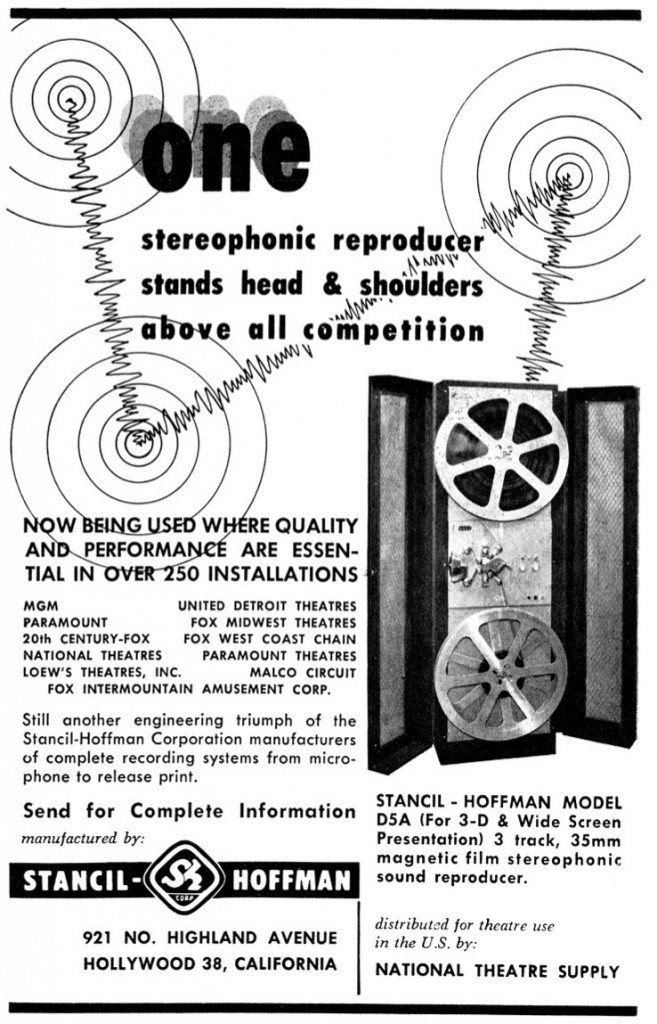 The Hallen Corp magnetic film-recorder circa 1953. A bargain at $13,000! (adjusted for inflation)
The Hallen Corp magnetic film-recorder circa 1953. A bargain at $13,000! (adjusted for inflation)
 The Stancil-Hoffman magnetic-film recorder circa 1953.
The Stancil-Hoffman magnetic-film recorder circa 1953.
Everyone (that reads this website…) is aware that magnetic wire recording gave way to magnetic tape recording, which gave way to magnetic discs, which are currently being slowly phased-out in favor of motionless ‘solid-state’ memory (via i-am-typing-this-on-maybe-my-last-macbook-that-will-have-a-spinning-harddrive). Progress is rarely purely sequential though, and just as there was the short-lived metal-tape recorder of the 1930s (see this previous post for info), the Ampex/Magnecord dominated early magnetic-tape era was challenged (for fidelity, at least) by magnetic film recorders. Aside from their heavy endorsement from Fine Recording, I don’t know much about these machines. Are any still in use? What made them superior to magnetic tape, and why? Let us know…
2 replies on “Magnetic Film Recording (1953)”
The Audio Cyclopedia has a good section with many details on this.
I recently acquired an Amega film recorder/reproducer that some nimrod had butchered for some incomprehensible purpose. There doesn’t seem to be any demand for them in pro use and there is no other market interested in them that I can find…the motors might be good for some kind of project.
It’s worth noting (as a price and labor costs comparison) the 1953 Corvette (any color you wanted as long as it was white, with a Blue Flame Six and Powerglide transmission that made it the laughingstock of sports cars) was $3,000 new and my late former old-maid spinster neighbor bought one brand new on her salary as an airline ticket agent-cash.
Those were better days for many reasons.
Mag film was superior for use when sound was synchronized to film. It could be edited on film equipment by film editors with minimal differences. It wasn’t intrinsically better than tape, but it was built for the film industry which is where the money was and so worked very well. The sel-sync era ended it for the most part.